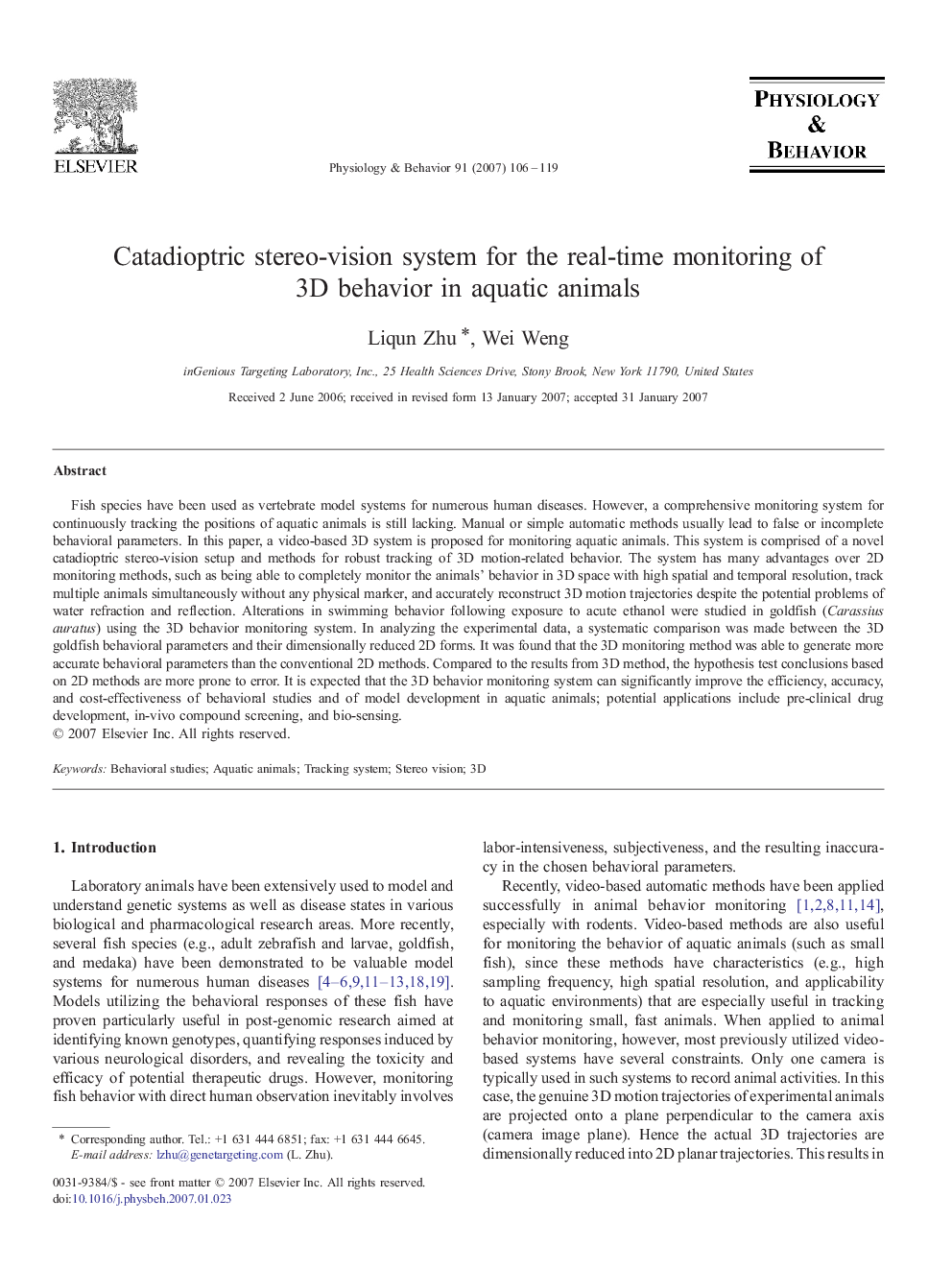| Article ID | Journal | Published Year | Pages | File Type |
|---|---|---|---|---|
| 2846107 | Physiology & Behavior | 2007 | 14 Pages |
Fish species have been used as vertebrate model systems for numerous human diseases. However, a comprehensive monitoring system for continuously tracking the positions of aquatic animals is still lacking. Manual or simple automatic methods usually lead to false or incomplete behavioral parameters. In this paper, a video-based 3D system is proposed for monitoring aquatic animals. This system is comprised of a novel catadioptric stereo-vision setup and methods for robust tracking of 3D motion-related behavior. The system has many advantages over 2D monitoring methods, such as being able to completely monitor the animals' behavior in 3D space with high spatial and temporal resolution, track multiple animals simultaneously without any physical marker, and accurately reconstruct 3D motion trajectories despite the potential problems of water refraction and reflection. Alterations in swimming behavior following exposure to acute ethanol were studied in goldfish (Carassius auratus) using the 3D behavior monitoring system. In analyzing the experimental data, a systematic comparison was made between the 3D goldfish behavioral parameters and their dimensionally reduced 2D forms. It was found that the 3D monitoring method was able to generate more accurate behavioral parameters than the conventional 2D methods. Compared to the results from 3D method, the hypothesis test conclusions based on 2D methods are more prone to error. It is expected that the 3D behavior monitoring system can significantly improve the efficiency, accuracy, and cost-effectiveness of behavioral studies and of model development in aquatic animals; potential applications include pre-clinical drug development, in-vivo compound screening, and bio-sensing.
